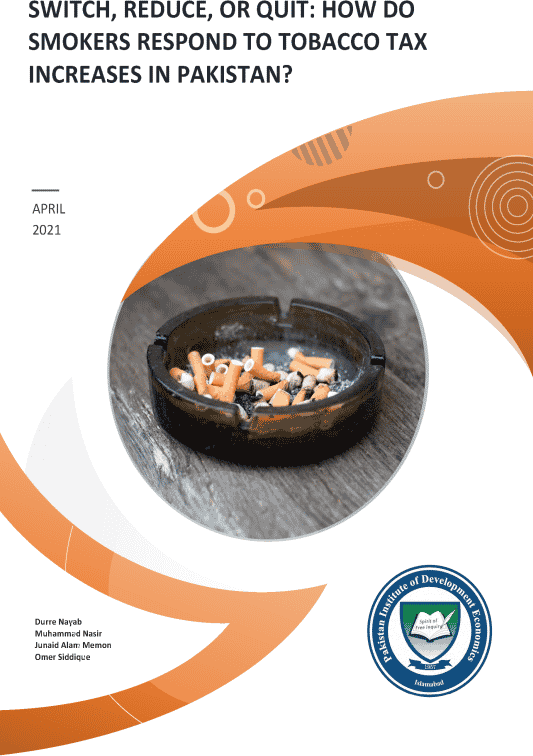
Pakistan Institute of Development Economics
- Home
Our Portals
MenuMenuMenuMenuMenuMenuMenu - ResearchMenuMenuMenuMenuMenuMenuMenu
- Discourse
- The PDR
- Our Researchers
- Academics
- Degree Verification
- Thesis Portal
- Our Portals
Switch, Reduce, OR Quit: How Do Smokers Respond to Tobacco Tax Increases in Pakistan?
Smoking is the leading cause of preventable deaths globally. Consequently, various programs and interventionist policies have been suggested and implemented to curb tobacco use and reduce cigarette consumption. Among these, tobacco taxation is the most effective. Evidence suggests that significant increases in cigarette taxes are effective in reducing smoking initiation by non-smokers and cigarette consumption of smokers – either by reducing the number of cigarettes, they smoke or quitting completely (Hanewinkel & Lsensee, 2007). Hence, the price-increase strategy – executed through taxation – effectively reduces the overall prevalence of smoking. Such evidence provides strong encouragement to public health experts worldwide, including those in Pakistan, to push their respective governments to use tax policy as a tool in the fight against tobacco consumption and its associated harms. The effectiveness of tobacco tax policy in Pakistan, like everywhere else, depends on three conditions: (i) significant pass-through of tax increase to prices, (ii) price-elasticity for the demand for cigarettes, and (iii) “sticky” behavior of smokers, meaning they do not switch across brands or other tobacco products. The importance of the first two conditions is obvious. If the increase in taxes does not transmit to prices or if cigarette consumption is price insensitive, the tobacco tax policy will be rendered ineffective in curbing tobacco use. The pass-through effect of cigarette tax increases into the final price in Pakistan is 80 percent, which is significant enough to affect cigarette demand (Cevik, 2018). Similarly, the demand for cigarettes is found to be price responsive in Pakistan (Mushtaq et al., 2011).1 A recent study estimated the price elasticity of cigarette demand to be 1.06 (Nayab et al., 2020). Hence, the first two conditions are empirically verified for Pakistan.



